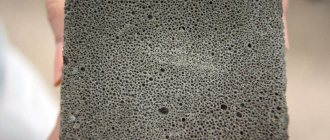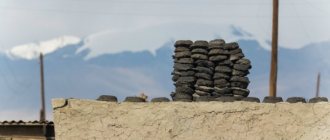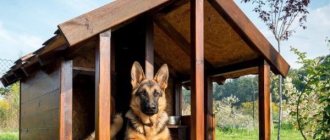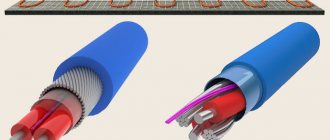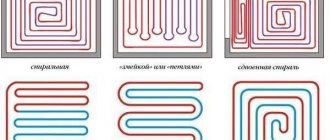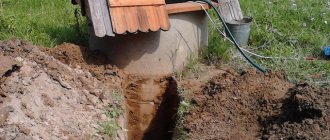30% discount until November 24 Call, (985) 991-28-10
- home
- Types of stained glass
»
There are quite a few different stained glass techniques, let's study each of them in more detail.
- Contour stained glass
- Filled stained glass windows
- Lacquer stained glass windows
- Tiffany stained glass
- Film stained glass
- Stained glass with photo printing, photo stained glass (printing on glass, photo printing, UV printing)
- Sandblasting stained glass (artistic matting / artistic sandblasting / engraving)
- Faceted stained glass windows
- Fusing (glass sintering)
- Classic (stacked) stained glass
- Glass painting
- Art mosaic
- Artistic bending
- Combined stained glass
- 3D Stained Glass
- Stained glass painting
- Matting
- Glass tile
- Cabochon
- Etching
- Bending
- Pattern "Frost"
- Shebeke (Panjara)
- Erklez
In the modern world there are many different types of stained glass. Their production is a labor-intensive process that requires special skills and knowledge. If you want to add elegance to your interior, pay attention to stained glass windows. Choose from a large number of stained glass techniques, the one you like. Types of stained glass windows amaze with their diversity of both manufacturing techniques and materials.
Tiffany stained glass
This is a technique based on the selection of colors and shades. Tiffany stained glass windows are made as follows:
1. The size is determined and a sketch is developed.
2. The color scheme is selected. This stage is the most important and requires special care. Glass conveys its true color only under special lighting and no photograph can demonstrate it.
3. The glass is cut into pieces, and each piece is ground and adjusted.
4. The fragments are treated around the perimeter with foil and degreased.
5. Then they are laid out on a pre-made matrix and soldered together with lead-tin solder. To give a tint to the solder, it must be covered with a patina, most often black or brown is used.
6. The stained glass window is framed for installation.
Requirements for stained glass glazing of facades
The requirements for stained glass glazing of facades, in fact, do not differ from those for other facade systems. There is no single regulatory document that would contain their list and description. However, with some degree of convention, they can be divided into the following groups:
- wishes of customers. The most diverse category of requirements, which is limited only by the imagination and taste preferences of the customer;
- requirements of designers and architects. In most cases, they are reflected in the relevant design and estimate documentation and largely depend on the customer and existing regulatory and technical documents;
- requirements of current standards (all-Russian and regional). At the moment, there is no single document or legal act that would clearly regulate the requirements for facade systems. They are contained in a variety of documents in fragments - somewhere they describe the requirements for thermal insulation characteristics, somewhere - for the lighting of premises, somewhere - for ensuring fire safety, etc.
It should be noted that existing SNiPs for glazing practically do not contain descriptions of modern materials and designs used in stained glass glazing. Until a new SNiP or GOST is developed, special attention should be paid to the compliance of the systems used with the design parameters, as well as to the availability of quality certificates from the company supplying the structures.
Photo stained glass (glass printing, photo printing, UV printing)
Three types of photo stained glass techniques
1. Direct
Printing is carried out on any glass surface using a special printer. To make such photo stained glass, special paints are used that are well absorbed into the glass under the influence of ultraviolet rays or high temperatures.
2. Film
Drawing an image onto a transparent film and then gluing it onto the glass.
3. Triplex
An analogue of the film method, but the pattern is placed between two sheets of glass.
Film stained glass
This is the least expensive way to make stained glass.
Making stained glass using film technology:
1. The drawing is approved.
2. The glass surface is degreased.
3. Parts of the selected image are cut from films of various colors.
4. The film is moistened with water and rolled out with a special rubber roller, which allows you to remove excess water. Gaps are left.
5. Bevels are glued to the gaps using ultraviolet glue. At the last stage, the image is fixed with lead tape running along the bevels. The tape is coated with an oxidizing liquid to give it the appropriate shade.
Sandblasting stained glass windows
Sandblasting stained glass windows are made using air flow and sand. They come in several types:
1. Artistic matting is a technique of applying an image using compressed air and the impact of a special liquid containing metal abrasive particles on a pre-prepared template.
2. Artistic sandblasting - processing with a powerful stream of air-sand mixture with the addition of dyes.
3. Engraving is the application of an image with a large stream of air and sand. The force of the flow is regulated and due to this the depth of the slot varies and sculptural, three-dimensional images are created.
Faceted stained glass windows
This type of stained glass is made as follows:
1. A chamfer is removed along the perimeter of the glass.
2. After removal, it is sanded until matte.
3. The part is polished and becomes completely transparent.
4. To enhance the refraction of rays, the chamfer is made wider.
5. Faceted stained glass windows are inserted into a brass or copper frame, which adds solemnity.
Filled (contour) stained glass windows
This type of technique involves creating a drawing by hand.
1. A drawing is selected and transferred to paper in full size. At the same time, colors are signed on the sketch.
2. The surface of the glass is degreased.
3. Using polymer paint, the outline of the design is applied to the glass under which the sketch is located. It will serve as a barrier.
4. After the contour has completely dried, the elements are filled with paints or varnish.
5. Finished flooded (contour) stained glass windows are allowed to be installed only after 24 hours - this time is allotted so that they can dry well.
Disadvantages of stained glass glazing
No building material or design is without its drawbacks. They are also available for stained glass windows. The main ones are the following:
- relatively high cost of materials and work. Despite the fact that, thanks to modern developments, the cost of the system has decreased somewhat in recent years, it is still used mainly in commercial facilities and where the customer is willing to invest significant financial resources to achieve convenience, comfort and an attractive appearance. type;
- the impossibility of creating non-flat curved surfaces, for example, spherical ones, due to the insufficient strength of the aluminum profile;
- instability of the stained glass glazing system under high wind loads, as well as in areas with seismic activity. This drawback seriously limits the use of the system in question in high-rise buildings, where it may be subject to increased wind loads. It is also not allowed to use panoramic glazing in seismically active regions, but there are relatively few such places;
- difficulty in cleaning the façade from the outside. Large glasses that act as an enclosing structure for stained glass windows cannot be washed from the inside. Therefore, we have to do it outside, which is quite problematic. The problem is aggravated when there are several floors - in this case, the invitation of industrial climbers or the use of lifting equipment is required.
The listed disadvantages of panoramic glazing are not so significant as to prevent its increasingly widespread use.
Rice. 10. Washing stained glass.
Fusing (glass sintering)
A unique technique in which a pattern is created either by baking pieces of glass of different colors and sizes at the same time, or by baking objects into glass. For example, it could be a wire.
Process steps:
1. Colored glass is cut out according to the outline of the design.
2. They are laid out on the base - most often this role is played by transparent glass.
3. The workpiece is placed in the oven. Under the influence of high temperature, the glasses are baked to each other.
Stained glass glazing of cottages
The variety of opportunities provided by the use of stained glass glazing has led to the fact that it is increasingly used in private housing construction, in the construction of country houses and cottages.
The systems under consideration are especially popular in cases where construction is not carried out according to a standard design, but using a variety of original architectural and design solutions. It is in such cases that the advantages of stained glass glazing can manifest themselves especially clearly.
Rice. 25. Stained glass glazing of the cottage.
It is most often used:
- when performing stained glass glazing of a cottage facade;
- when decorating a winter garden and similar small rooms or structures. This type of structure also includes various gazebos, pavilions and terraces that are built on the territory of a suburban area. The use of stained glass allows not only to give them an attractive appearance, but also reliably protects them from precipitation and wind;
- to create a single harmonious exterior design that seamlessly includes window and door designs.
Currently, a variety of stained glass glazing systems are increasingly being included by designers and architects in the designs of small country houses and cottages, which indicates that stained glass glazing will be used more and more often.
Classic (stacked) stained glass
This technique is one of the easiest to produce stained glass. Classic stained glass is made on a typesetting table from glass fragments that are cut in advance. This type of technique is used in the manufacture of stained glass windows that do not contain painting.
Several assembly methods are used:
1. The mosaic pieces are assembled directly onto a pre-prepared metal structure.
2. The fragments are laid out on a sheet of glass and glued to it.
Features and advantages of stained glass glazing
The design of a stained glass glazing system can be used even where it is practically impossible to install ordinary plastic or wooden windows, for example, in bay windows or bays. The undoubted advantages of panoramic glazing are most clearly manifested when used on the facades of large multi-storey buildings, however, even when used in private country houses, stained glass is quite competitive in comparison with alternative glazing options.
Moreover, since the system is constantly being improved, it is safe to say that in the future the scope of its application will only expand. This is not at all surprising, given the numerous advantages, which will be discussed below.
Rice. 2. Facade panoramic glazing.
Economical
The cost-effectiveness of installing stained glass is ensured by several factors. Firstly, there is no need to use lifting mechanisms. Secondly, the work is completed in a short time, since its labor intensity is low. Thirdly, the cost of glass as the main enclosing material is lower than that of other types of facade. Fourthly, the stained glass facade system does not require special maintenance and care, which is also economically beneficial. Do not forget that thanks to the features of stained glass windows, there are real and quite noticeable savings on lighting the interior of the building.
Durability
Most often, stained glass glazing is performed using an aluminum frame and enclosing structures made of double-glazed windows or triplex. The estimated service life of aluminum structures made using modern technologies is approximately 65-70 years. Triplex, double-glazed windows and other types of glass may well last even longer.
It should also be taken into account that the stained glass system is practically resistant to corrosion and other influences of aggressive factors. As a result, facades made using this technology are significantly superior to all existing analogues in terms of structural durability.
Rice. 3. Stained glass with entrance doors.
Strength
Despite the apparent fragility of stained glass glazing, the system has a sufficient margin of safety. For example, the frequently used triplex can withstand an impact weighing 70-80 kg without any consequences.
In addition, all stained glass systems allow the use of glass with special protective characteristics, for example, armored or vandal-proof. As a result, with a slight increase in the cost of the design, a system can be obtained that is very difficult to damage, much less break. In terms of its strength characteristics, stained glass glazing is not inferior to most facade systems.
Light transmittance
One of the main features of the stained glass system is high light transmittance. Moreover, this applies both to cases of using ordinary glass, which is completely transparent, and when using colored triplex or even stained glass, which also transmit a fairly large amount of light.
Staying in a building with natural light is not only cost-effective, but also extremely beneficial and comfortable. It has long been known that the human eye strains and, as a result, gets tired much more under artificial lighting. At the same time, natural light has an extremely beneficial effect on vision and general psychological comfort.
Rice. 4. Natural lighting with stained glass windows.
Easy to repair
Thanks to the design features and installation technology, stained glass glazing is extremely easy and simple to install. But the advantages are far from being exhausted by this advantage. If it is necessary to replace glass that has become unusable, it is enough to dismantle a separate element. Disassembly of the entire system is not required, which greatly facilitates any repair work.
The ability to replace any of the blocks that form the stained glass system is one of the most important factors in the ease of its operation and maintenance. At the same time, repairs do not require specialized equipment or professional skills; the work can be carried out on one’s own.
Rice. 5. Replacement of double-glazed windows.
Environmental friendliness
One of the most important modern requirements for almost all building materials and structures is compliance with environmental safety requirements. All materials, products or structures used in the manufacture and subsequent installation of panoramic glazing are absolutely safe for humans, animals and plants. They are environmentally friendly and environmentally friendly, containing no allergens or other harmful or irritating substances.
Thanks to this, stained glass glazing can be used everywhere, on any buildings and structures, without any restrictions.
Rice. 6. Original design solution for the facade.
Thermal insulation
Various panoramic glazing systems can be used in any region of Russia. They are highly resistant to low and high temperatures without being deformed at all.
In addition, the use of modern materials, including special seals, sealing tapes and various thermal inserts, allows the system to provide high thermal insulation performance. They guarantee both protection of the interior of a building or structure from external temperature influences, and the maintenance of a comfortable temperature regime inside due to extremely low heat loss.
Rice. 7. Comfortable indoor conditions at low outside temperatures.
Soundproofing
High levels of tightness of stained glass systems provide not only heat but also sound insulation. It is also achieved by correctly assembling the system with all the necessary parts and components, including thermal inserts, sealing tapes and special seals.
All components are supplied with the system, and they are selected in such a way as to correspond to the climatic conditions of operation in a given region. In addition, their installation is as simple as other technological processes for installing stained glass.
Rice. 8. A building with stained glass windows on a busy highway.
The attractiveness of stained glass glazing
No matter what remarkable performance properties and characteristics the façade stained glass system has, it would not have become so widespread without one of its main advantages - an attractive, aesthetic, expensive and modern appearance.
A wide variety of color solutions, the ability to give the facade various, sometimes very bizarre, shapes, the creation of a wide variety of design solutions and design options for the building - all this allows stained glass glazing to be considered not just a structural element, but also often the main decoration of the building.
Rice. 9. Design option using panoramic glazing.
3D Stained Glass
This is the latest technique for creating stained glass, creating the illusion of a three-dimensional image.
Manufacturing:
1. A sketch is selected and pieces of glass are cut.
2. Each piece is processed: cutting off irregularities and turning chips.
3. All glass particles are joined into a whole image using brass solder.
4. Next, the painting is placed between two sheets of glass - this provides the desired effect and strength.
5. The workpiece is placed in an oven and heated at a temperature of 850 degrees. Production time is 10 minutes. When the workpiece has cooled, it is wrapped in aluminum tape and filled with rubber in liquid form.
Etching
A technique based on the interaction of hydrofluoric acid with one of the glass elements, namely silicon dioxide. A protective stencil is used that allows you to create a design. Etched stained glass is three-dimensional drawings, the relief of which is noticeable on the glass.
Manufacturing:
1. First, a protective film is applied to the glass.
2. On film - the outline of the future drawing.
3. Next, the image is melted with acid.
This method requires special care because the acid corrodes not only glass, but also other surfaces, such as skin, if it comes into contact with it.
Stained glass glazing of balconies and loggias
The expansion of functionality and improvement of basic performance characteristics, which occurred thanks to the use of modern technologies in the production of stained glass systems, made it possible to use them in the glazing of balconies and loggias. This was also facilitated by the fact that the price of stained glass glazing is becoming more and more affordable over time.
The use of stained glass glazing for balconies allows you to achieve a number of advantages:
- the ability to perform glazing work on even the largest openings of almost any shape;
- increasing the level of natural light in rooms adjacent to the balcony or loggia;
- improving the appearance of a building on which stained glass glazing of balconies is used;
- the ability to implement various design solutions for the design of a balcony or loggia;
- high maintainability of the system, which is achieved by the possibility of replacing any of its elements.
The disadvantages of using the design in question include:
- the need for careful adherence to installation technology;
- difficulty in cleaning glass from the outside;
- free view, which is accessible not only to the owner of the apartment, but also from the outside.
The use of modern stained glass systems allows you to get rid of most of the shortcomings or reduce them to a minimum.
Rice. 24. Option for frameless glazing of a balcony.
Pattern "Frost"
This technique is performed in several stages:
1. The most difficult stage is preparing the surface; it must be scratched, etched or rubbed with an abrasive metal.
2. Apply wood glue or gelatin.
3. Place in oven.
4. Allow the glue to dry so that it shrinks and pulls out thin pieces of glass.
Stained glass made using this technique resembles frosty patterns on the window.
Shebeke (Panjara)
This is a three-dimensional lattice, which is most often cut out of stone or wood, thereby forming a window frame. It uses colored glass.
